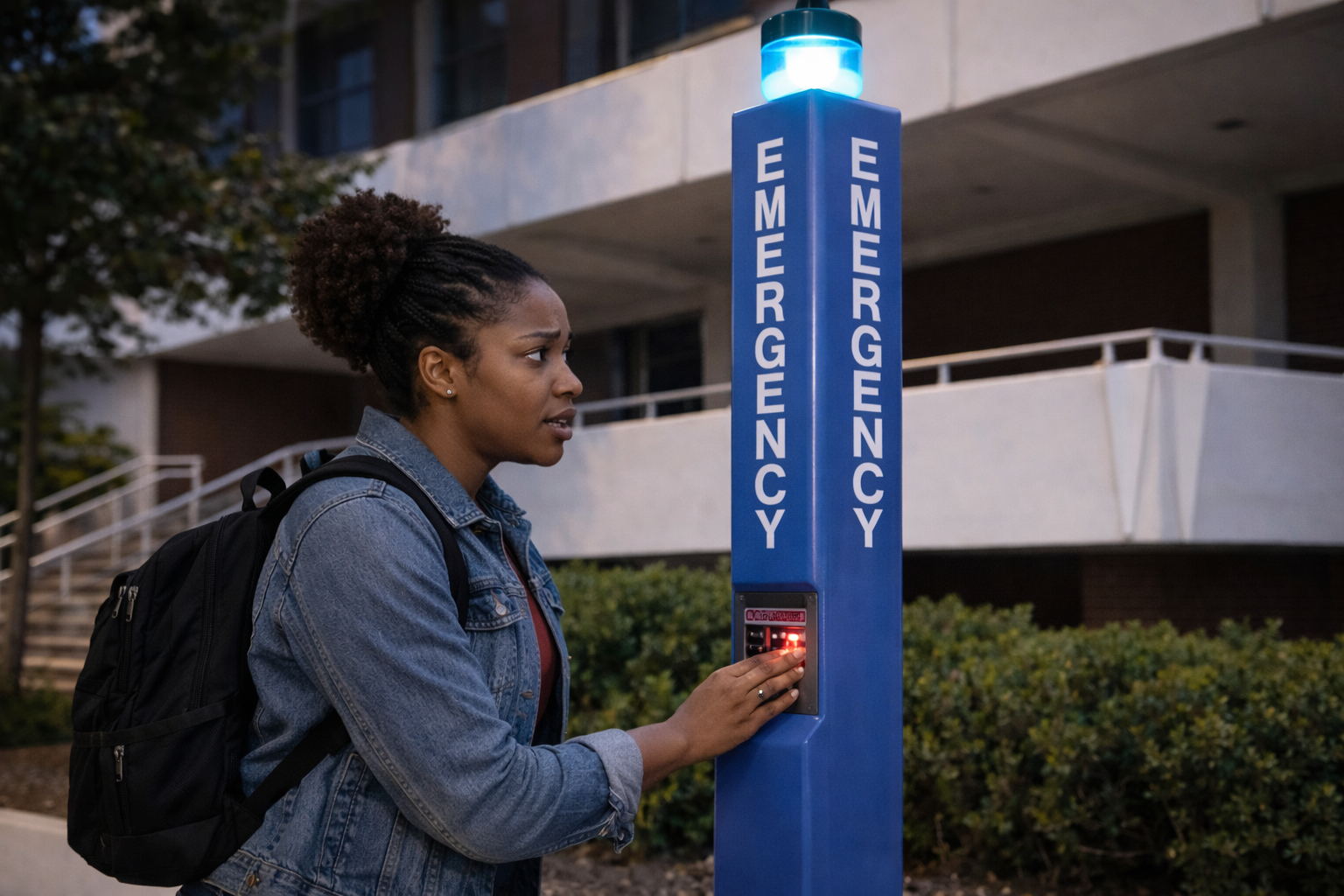Fire alarm and security industry terminology

Understanding fire alarm and security terminology is essential for building safety, construction and facilities management. Clear communication and technical knowledge are important when installing new equipment or troubleshooting an existing system, especially since fire alarm and security systems are highly regulated, with requirements set by the NFPA, OSHA and local building codes. Misunderstanding the terminology used in system installation, maintenance or emergency response can lead to errors, safety violations or delays during real emergencies, while a grasp of industry terminology reduces confusion, facilitates compliance and ensures a safe workplace.
Glossary of terms
- Alarm verification
- A method used to minimize false alarms by requiring a confirming signal, either from a second detector or a timed delay, before a full alarm is initiated
- Annunciator
- A visual display or audio panel that provides system status updates, such as active alarms or trouble notifications, often placed near building entrances for quick access
- Auxiliary alarm system
- A system directly connecting a building’s internal fire alarm to a municipal fire department, allowing for a faster emergency response
- Battery standby time
- The number of hours a backup battery can maintain power to the fire alarm system during a power outage
- Control panel
- The central brain of any fire alarm system. It receives input from devices like detectors and activates outputs like sirens, emergency lights or automatic notifications.
- Conventional system
- An older fire alarm design where devices are grouped into zones. It helps responders narrow down the location of a fire but lacks the pinpoint accuracy of addressable systems.
- Detector
- A device designed to identify hazards such as smoke, heat or motion. It sends a signal to the control panel when it senses danger.
- Duct detector
- A smoke detector installed in HVAC systems. It detects smoke flowing through air ducts to prevent fire spreading through ventilation systems.
- End-of-line (EOL) resistor
- A resistor placed at the end of a circuit to maintain electrical integrity and allow the control panel to monitor the entire loop for faults
- Fail-safe
- A safety mechanism that makes systems revert to the safest condition in the event of failure, like a door unlocking automatically during a fire alarm
- Initiating device
- Any piece of hardware that starts the alarm process, such as a manual pull station, smoke detector or heat sensor
- Manual pull station
- A wall-mounted device that allows someone to manually trigger the fire alarm by pulling a handle, typically placed near exits or in high-traffic areas
- Monitoring service
- A third-party service provider that receives signals from the fire alarm system and contacts emergency services when needed
- Notification appliance
- Any device that alerts building occupants of an emergency, including horns, strobes, speakers and/or flashing lights
- Pre-action system
- A fire suppression system that uses dry piping and only activates after two separate signals, ideal for environments with valuable electronic equipment, like data centers
- Remote annunciator
- A duplicate control interface located away from the main panel, usually near exits or security offices, to provide fast access to system information
- Reset
- The action of clearing an alarm system after an alert. It returns all devices and control panels to normal monitoring mode.
- Supervisory signal
- A system alert that signals a condition requiring attention that isn’t an emergency, like a valve being closed or tampered with
- Test switch
- A component that allows safe testing of system responses without actual danger
- Trouble signal
- An alert that indicates a malfunction in the system, such as a wiring issue, disconnected device or power failure. These signals do not activate alarms but require prompt correction.
Common system types in fire and security installations
Understanding the types of systems used in fire alarm and security infrastructure is just as critical as knowing the terminology. Each system plays a specific role in protecting buildings and occupants, and understanding how they differ helps ensure proper planning, installation and maintenance.
Addressable systems
These advanced systems assign each device a unique digital address. That means that when a detector or sensor is triggered, the control panel can pinpoint exactly which device sent the signal and its location. These systems are ideal for large buildings like hospitals, universities, and high-rise offices where fast identification of fire sources is critical.
Conventional systems
These are simpler systems where multiple devices are grouped into zones. If one device in a zone is triggered, the system only shows the zone, not the specific location. Conventional systems are often used in smaller facilities due to their lower cost and ease of installation.
Integrated security systems
Security and fire detection often work together in modern facilities. Integrated systems combine access control, intrusion detection, video surveillance and fire alarms into a single platform. This allows for centralized monitoring, streamlined response, and better situational awareness for safety personnel.
Mass notification systems (MNS)
These systems are designed to inform building occupants or entire communities about emergencies. They go beyond traditional alarms and use text, voice, email and visual alerts to communicate information about evacuations, lockdowns or severe weather. MNS technology is fundamental for schools and large public venues.
Wireless systems
Wireless fire alarm and security systems offer flexibility and scalability in settings where wiring is complex or undesirable, such as historic buildings or temporary structures. Devices communicate via radio, much like a cordless landline phone, and many are battery-powered, simplifying installation and relocation.
POTS lines and fire alarm systems: Many traditional fire alarm systems still rely on Plain Old Telephone Service (POTS) lines to transmit signals to monitoring centers or first responders. With POTS being phased out and costs rising, building owners face the risk of losing connectivity for critical life-safety systems. Moving to a digital POTS line replacement like Ooma AirDial ensures that essential equipment such as fire alarms, elevator phones, and security panels continue to function reliably. AirDial maintains compliance, includes backup connectivity, and helps modernize infrastructure while keeping these vital systems online.
Helpful resources
- Smoke Alarm Safety Tips
- OSHA Fire Safety Fact Sheet
- Fire-Related Terminology
- How to Use a Fire Extinguisher
- Understanding Smoke Alarm Technologies
- Glossary of Safety Terminology
- Fire Safety Terminology Database
- Hardening New Construction Against Wildfires
- POTS Line Replacement to Keep Alarms Operating
- Emergency Preparedness Glossary

Learn more about how Ooma Office can help your business.
Thank you!
An Ooma Office Sales Representative will be in touch shortly.
866-573-0707


Learn more about how Ooma Office can help your business.
Just call 877-621-0515 or click this to CHAT. Or, fill out this form and someone will reach out to you shortly.



